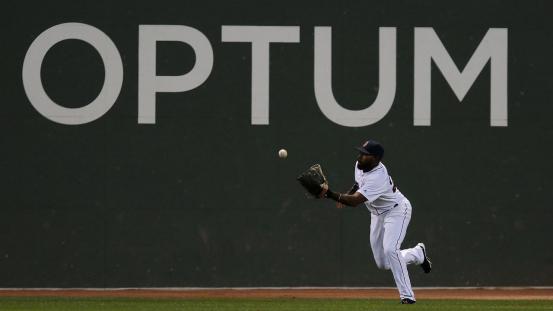- Commissioner’s statement on Ventura, Marte
- Ronnie O’Sullivan: Masters champion ‘felt so vulnerable’ in final
- Arron Fletcher Wins 2017 WSOP International Circuit Marrakech Main Event ($140,224)
- Smith challenges Warner to go big in India
- Moncada No. 1 on MLB Pipeline’s Top 10 2B Prospects list
- Braves land 2 on MLB Pipeline’s Top 10 2B Prospects list
- Kingery makes MLB Pipeline’s Top 10 2B Prospects list
- New Zealand wrap up 2-0 after Bangladesh implosion
- Mathews, Pradeep, Gunathilaka to return to Sri Lanka
- Elliott hopes for rain for Poli
The 5 least likely hits of the Statcast era
- Updated: May 25, 2016

The most beautiful — or frustrating, depending on your perspective — part of baseball is that sometimes you can do your job as a hitter nearly perfectly and have it backfire. Sometimes, as has happened to Carlos Gonzalez twice in the past two seasons, you can destroy a ball at 117 mph off the bat and have it turn into an out, because of defensive placement or lack of height or just plain bad luck. Doing exactly what you want at the plate doesn’t always lead to success. It’s hard to reconcile, sometimes.
As we dig deeper into Statcast™ data, we can get a lot closer to understanding what types of batted balls are the most likely to become hits, at least based on the combination of exit velocity and launch angle. We know that those two data points form a crucially important marriage, because where you place a ball is just as important as how hard you hit it. To choose a random example, all balls hit at 63 mph have just a .199 batting average, because those are not well-hit balls. However, balls hit at 63 mph with a 35-degree launch angle have a .917 batting average, because they can get over the infield but fall in front of the outfield.
With that in mind, we can identify the batted balls so far this season that had the highest likelihood of becoming hits, but turned into outs anyway. It turns out that there’s actually a few different causes, from defensive positioning to ballparks to bad luck, but the main unifying factor is a hitter who walks away completely disgusted with what just happened. It’s the kind of thing only baseball can offer.
5. May 3, Seattle @ Oakland — Seth Smith lines out into the shift77 mph / 19 degrees / 36 hits in 37 instances
There’s a lot of reasons why it’s harder than ever to be a hitter. Velocity keeps going up, and the strike zone seems to keep increasing at the bottom. An endless supply of fresh one-inning relievers come out of the bullpen to whip sliders and cutters at speeds that previous generations could never have imagined.
And sometimes, it’s because you hit a ball that lands safely for a hit 36 times out of 37, as Smith did in Oakland earlier this month, and the second baseman is standing where no fielder traditionally had any business whatsoever standing. Just look at where Jed Lowrie was lined up before the previous pitch:
For more than a century of baseball, and even for most of present-day baseball, putting a batted ball in that spot would be guaranteed success. So file this one under “why teams shift,” because the A’s had Smith pegged perfectly, as you would expect against a hitter who has gone to the opposite field a career-low 17.2 percent of the time this year. That’s a big open space of welcoming green grass, suddenly filled by a man with a glove.
4. April 25, Oakland @ Detroit — Billy Burns flies out to center 87 mph / 14 degrees / 43 hits in 44 instances
“It looked like a hit off the bat,” suggested the Oakland television broadcast, “but Anthony Gose plays shallow,” and they were right. Every other time this year we’ve seen a batted ball with a combination of 87 mph exit velocity and …
continue reading in source mlb.mlb.com
